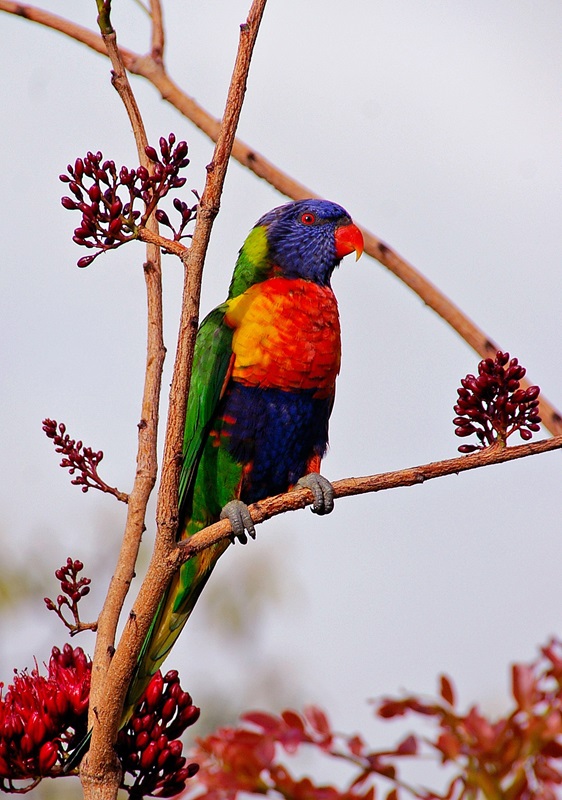
The Rainbow Lorikeet(Trichoglossus moluccanus) is a spectacular parrot found native to the coastal regions of eastern and northern Australia. Renowned for its stunning array of colors, this lively bird captivates bird watchers, nature enthusiasts, and casual observers alike. Let’s dive deeper into the world of the Rainbow Lorikeet, exploring its characteristics, habitat, diet, and conservation status. The Rainbow Lorikeet is classified in the avian order Psittaciformes and family Psittaculidae. A Rainbow Lorikeet can live for up to 30 years.
Physical Characteristics
Adult Rainbow Lorikeets are easily recognized by their vivid plumage. Their vibrant feathers showcase a striking combination of green, blue, yellow, and orange. The head is typically blue, while the throat and chest boast a brilliant orange hue, creating a striking contrast against their lush green body.
Adult Rainbow Lorikeets measure 28 centimeters(11 inches) long on average, the average weight is 127grams(4.5 ounces), the wingspan is approximately 46 centimeters(1’6″). Their strong, curved beaks are perfectly adapted for their diet, allowing them to forage for nectar and fruits with ease. The males and females appear remarkably similar, making it basically impossible to differentiate between the sexes.
| Genus | Trichoglossus |
| Species | T. moluccanus |
| Binomial Name | Trichoglossus moluccanus |
| Length | 25-32 cm(10″-1’1″) |
| Weight | 70-169 g(2.5-6 oz) |
| Wingspan | Approximately 46 cm(1’6″) |
| IUCN Status | Least concern |
Range And Habitat
Rainbow Lorikeets live in Australia where they inhabit woodlands.
Breeding
Rainbow Lorikeets nest in tree hollows. The Rainbow Lorikeet mother lays a clutch of 1 to 3 eggs which she alone will incubate for 22 to 25 days. The eggs are white.
Diet
Rainbow Lorikeets eat nectar, pollen, fruits, seeds, and insects.
Conservation Status
As of now, the Rainbow Lorikeet is classified as “Least Concern” by the International Union For Conservation Of Nature (IUCN), indicating that their populations are stable overall. However, like many species, they face threats from habitat loss and the destruction of native vegetation.
Conservation efforts are aimed at preserving their natural habitats and increasing awareness about the importance of protecting native flora and fauna. Enthusiasts can contribute to these efforts by planting native flowering plants in their gardens, enhancing food sources for these beautiful birds.
Conclusion
The rainbow Lorikeet is more than just a living rainbow; it is a vital part of the ecosystems it inhabits. With its striking colors, sociable nature, and specialized feeding habits, it symbolizes the vibrant wildlife of Australia and its surrounding regions. As we continue to appreciate and study these extraordinary birds, it’s essential to ensure their environments remain protected and thriving for future generations to enjoy.
In a world increasingly affected by urbanization the Rainbow Lorikeet serves as a reminder of the beauty and resilience of nature. Whether observed in the wild or from a distance in urban parks, these spirited birds inspire admiration and a deeper commitment to the preservation of wildlife habitats.
